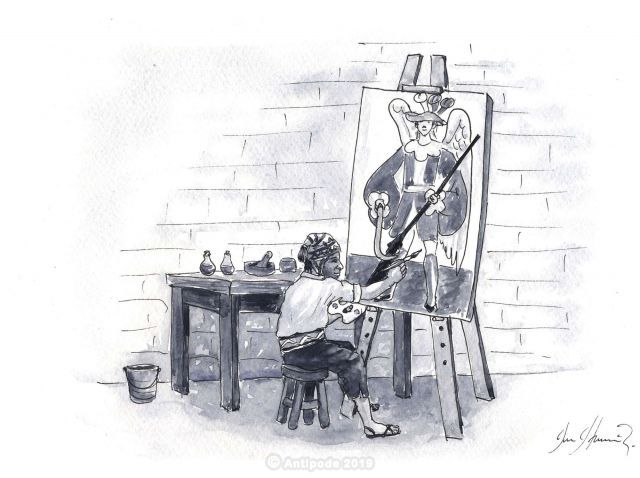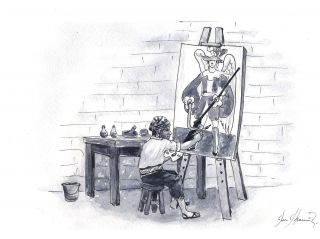

Who was one of the most important painting school in the Andes during the Spanish conquest?
The Painting school of Cusco
The Spanish territories conquest of the New World would have known two important times: first the political conquest, obtained forcibly in a few time and the spirit conquest, more difficult to obtain because in the long run. If the sword achieved to subdue though fear, this is a religious brainwashing that permitted to the Spanish win completely the battle on aboriginals.
Evangelize those pagan populations condemned to the eternal fire of Hell for not believing in the Christian God, this is the purpose that every Christian sect have when they arrive to unknown lands. Jesuits, Franciscans and other quickly started a stiff competition to bring back the most people. First step: strike spirits, impress, and install fear and respect. So they have to build big and imposing. This is why there was a multitude of churched growing up like mushrooms into the whole country. We give big part of the stolen gold to religious monuments, like to show where the new allegiance must go.
But to decorate the churches, they need paintings, sculptures and art. They also need to introduce those people, mostly uneducated, who don’t even know read nor write, and who mostly don’t speak very well the colonizer’s language. The art piece took then another dimension very didactic. The formation of an entire generation of aboriginal artists started in order to give their piece of art to churches newly built and so convert the naysayer aboriginals to the Divine Word.
But those artists didn’t answer to the strictly speaking at the behest of “padrecitos” (priests); they incorporated, to the ordered scenes, elements of their Andean culture and world view. So, the Virgin Mary is represented as a big pyramid, representation of the Apu (mountain divinity) and associated to Pachamama. The Christ on the cross is surrounded by the sun and the moon, with at his feet the snake and in the sky the condor. The substantive landscapes are very representatives of the highlands of the Andes, like the exuberant vegetation of the Amazonian jungle, etc… This mix of elements strictly Christians and of Andean world view is the principal aspect of recognition of Cusco School.
Other aspects are also very characteristics; the lack of perspective (like the medieval art in Europe), the very expressive treatment of the subjects (the Christs on the cross are particularly strongs), bright colors (as well as the utilization of liquid gold on the same paintings), some subjects are like angel-soldiers and, above all, the complete anonymity of the major parts of artists, whose indigenous origin wasn’t a pride. This is only with time that racism and discrimination will give place to some artists. The first who made a name is Diego Quispe Tito (1611-1681), a young descendant of the Inca nobility, who after following during a time a style named “mannerism”, gave his measures of nobility to what will become Cusco School.
After him, others like Basilio de Santa Cruz Pumacallao (1635-1710) or Marcos Zapata (1710-1773) will continue the artistic movement. This one isn’t the prerogative of Quechuan painters, natives. Some mestizos have also illustrated; Julio Lopez de Uturrizafa, Juan Espinoza de los Monteros, Lazarro Pardo del Lago, etc.
To conclude, while Cusco School was born in the ancient imperial capital, almost all the Peruvian cities have paintings from Cusco School.



